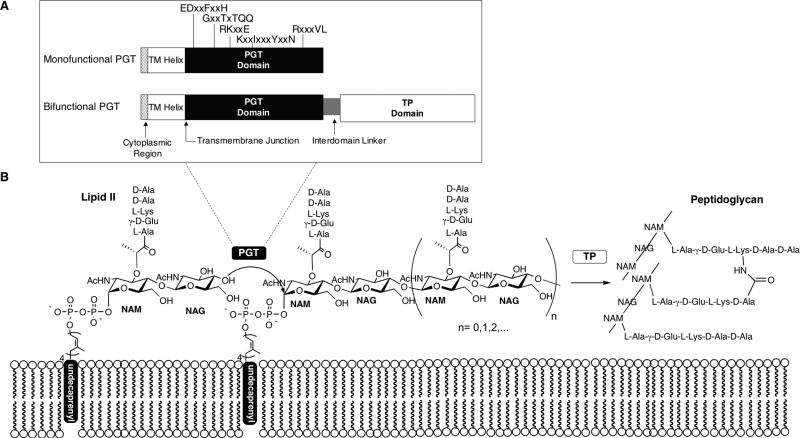Fig. 1.
PGT topology and the glycosyltransfer reaction. (A) Topology of monofunctional and bifunctional PGTs. Highly conserved residues, arranged in the motifs that typify the PGTs, are indicated above. (B) PGTs catalyze a glycosyltransfer reaction that involves attack by the C4-OH of a terminal NAG residue on the anomeric carbon of a NAM unit of the diphospholipid donor (Lipid II: n = 0; Lipid IV: n = 1); the direction of elongation has not been rigorously established but is thought to occur via addition of new subunits to the reducing end of the growing polymer (2). The glycans are then cross-linked at the peptide stem by bacterial TPs.

